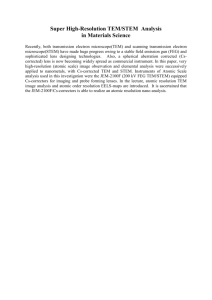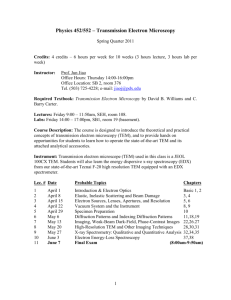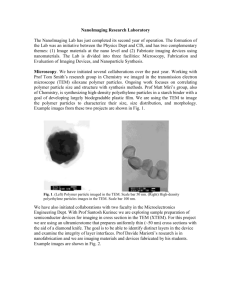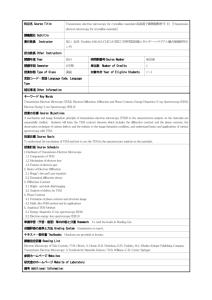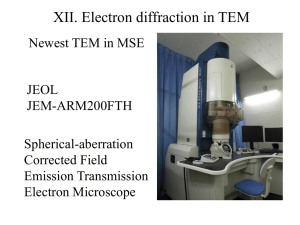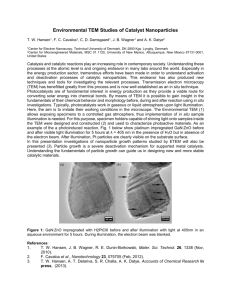MLB Methods: TEM
advertisement
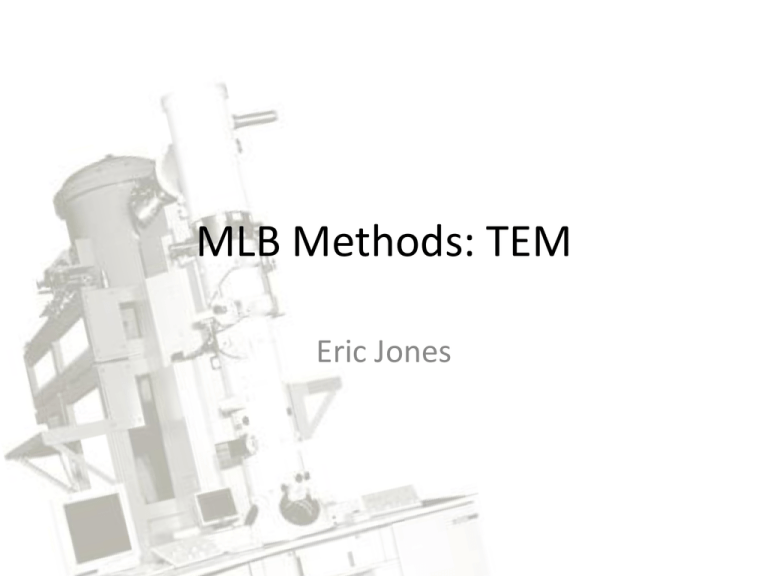
MLB Methods: TEM Eric Jones Outline • An introduction to TEM – Why TEM? – A quick look under the hood – Electrons go in, but what comes out? • The basics of imaging – Scattering – Contrast mechanisms – Imaging modes • Everyone likes a little spectroscopy • Aberration correction Why TEM? • The diffraction limit is on the order of the wavelength of the illumination – Wavelength of light ~500nm – Wavelength of electron (at 200 keV) ~2pm • High energy e-beam provides a platform for multiple characterization techniques 0.61 0.61 sin NA Inside a TEM • • • • • • Source Condenser optics Specimen Objective optics Projector optics Various cameras and detectors Electron/sample interaction Basics of imaging: scattering • Elastic scattering – Rutherford – Z dependent – Bragg • Inelastic scattering – Interaction with electrons Basics of imaging: contrast • Mass-thickness • Diffraction • Phase contrast Phase contrast Mass-thickness Diffraction contrast Imaging modes: TEM vs STEM TEM (or CTEM) Electron beam Specimen Recording media STEM STEM not STM! • Reduces artifacts that arise from microscope hardware – Single atom imaging • Main contrast is due to incoherent elasticallyscattered electrons (Rutherford) – Z-contrast imaging • Easily combined with spectroscopic techniques Spectroscopy in TEM • Energy dispersive X-rays (EDX) • Cathodoluminesence (CL) • Electron energy loss (EELS) Aberration correction… it’s good • Aberration correction! – Resolutions of ~50pm now achievable Practical considerations • Sample preparation – Samples must be electron transparent (> 100nm) – Sample preparation is destructive • Small areas of interest • Great microscopy takes time (and really expensive equipment) Things going on in the world of TEM • Vortex beams! • Exit wave reconstruction • Bio-materials imaging • In-situ experiments Questions?



